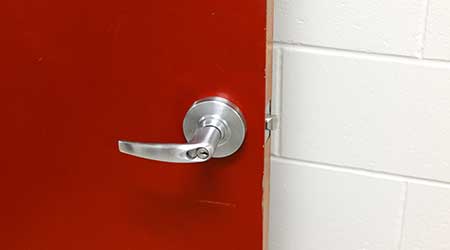
As ADA Nears 30, Challenges to Accessibility Remain
October 9, 2019
Nearly 30 years after the enactment of the Americans with Disabilities Act (ADA), institutional and commercial facilities continue to grapple with its accessibility guidelines. For maintenance and engineering managers in many of these facilities, ensuring accessibility, though important, must compete for funding with other organizational projects and programs. The experiences of one student at a large university reveal the importance and challenges of ensuring acceptable accessibility.
Navigating the many hills and countless sets of stairs on the University of Georgia campus with relative ease is something many people take for granted. Yet for students like Tyler Burrell, it’s not that simple. Along with other disabled students, she must rely on mindful construction and resources from the Disability Resource Center, according to The Red & Black.
Peabody Hall is one of the many older buildings on North Campus that is difficult to navigate, as much of the university’s campus was built in the mid-1800s to mid-1900s, long before the 1990 enactment of the ADA. While the university ensures all new construction is ADA-compliant, many older buildings were not designed with accessibility in mind.
“There are very narrow doorways, a narrow stairwell, there’s no elevator,” Burrell says about Peabody. “I can’t have classes in that building because it’s not accessible.”
Many disabled students utilize services offered by the university’s Disability Resource Center (DRC) to combat these struggles. Students can register for accommodations by submitting an online application and documentation of their disability. Each student who registers is assigned a DRC coordinator to review their accommodations and work alongside the student to determine their needs in the classroom and around campus.
Funding and prioritizing projects to increase accessibility are determined by members of the DRC, Equal Opportunity Office and Office of University Architects and Facilities Management Division. The university receives annual funding from the state to address deferred maintenance and improvements as part of the Major Repair & Rehabilitation process, which is used for accessibility projects, says university spokesperson Rebecca Beeler.
Dan Hounsell is editor-in-chief of Facility Maintenance Decisions.
Next
Read next on FacilitiesNet












